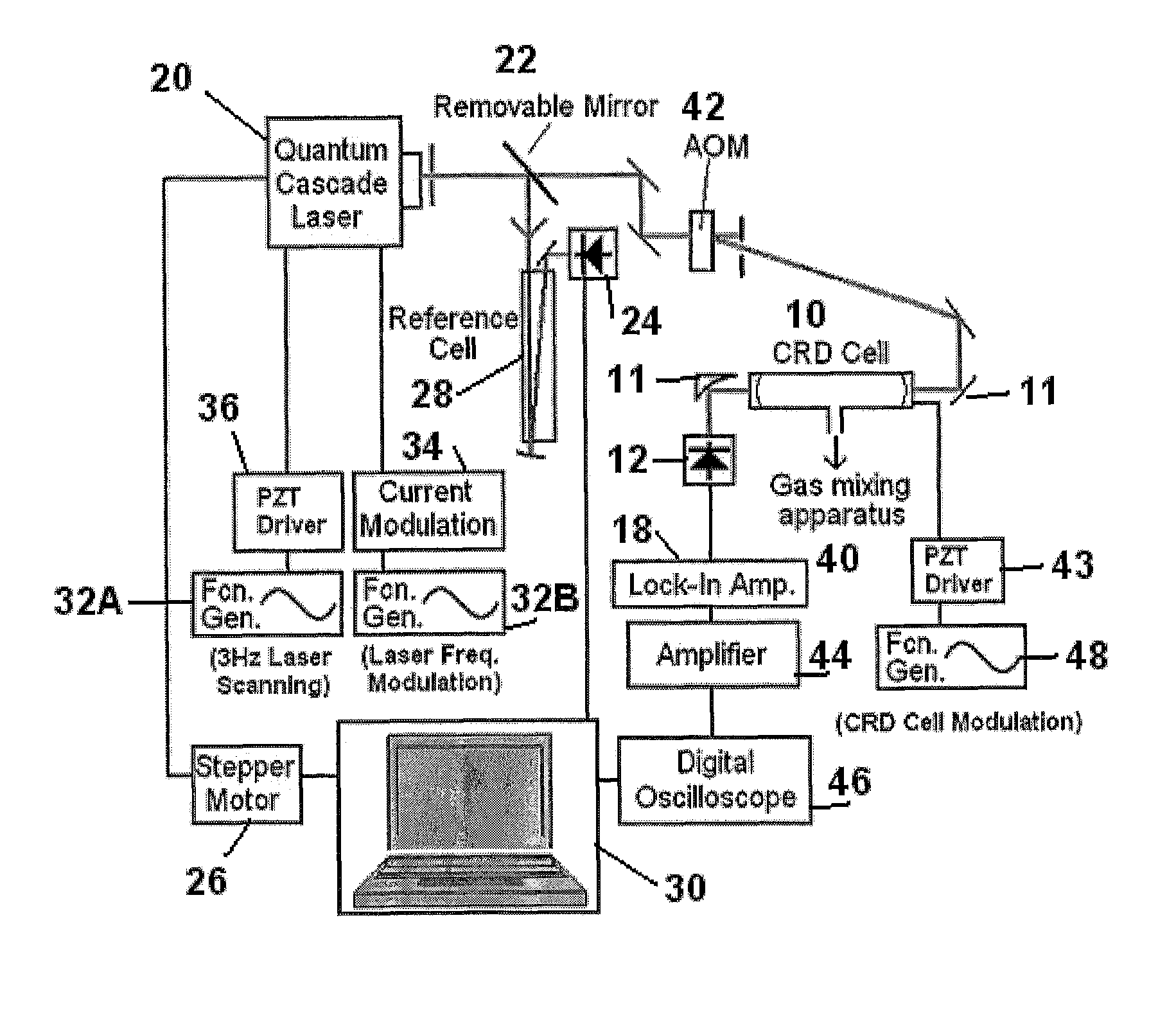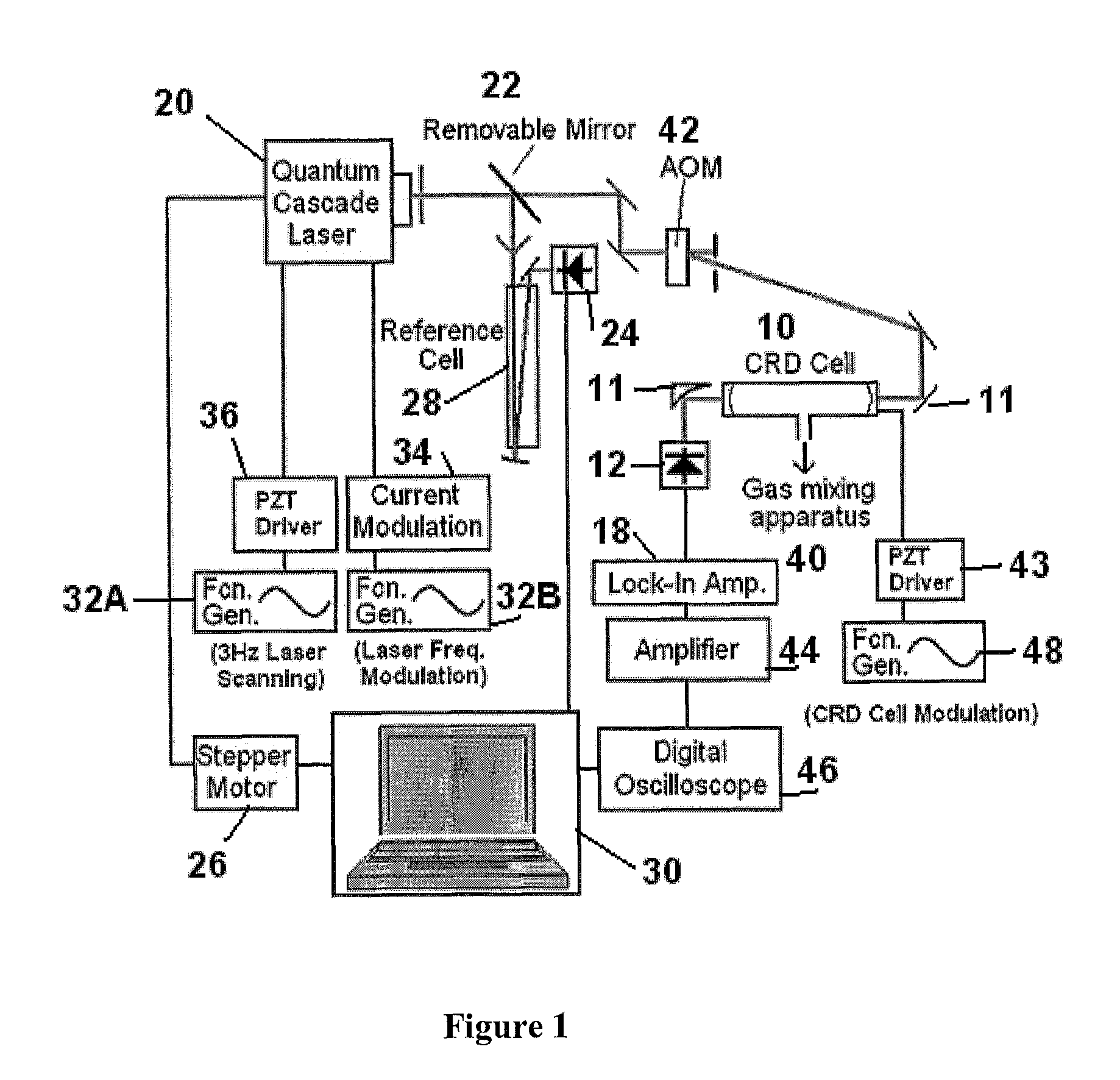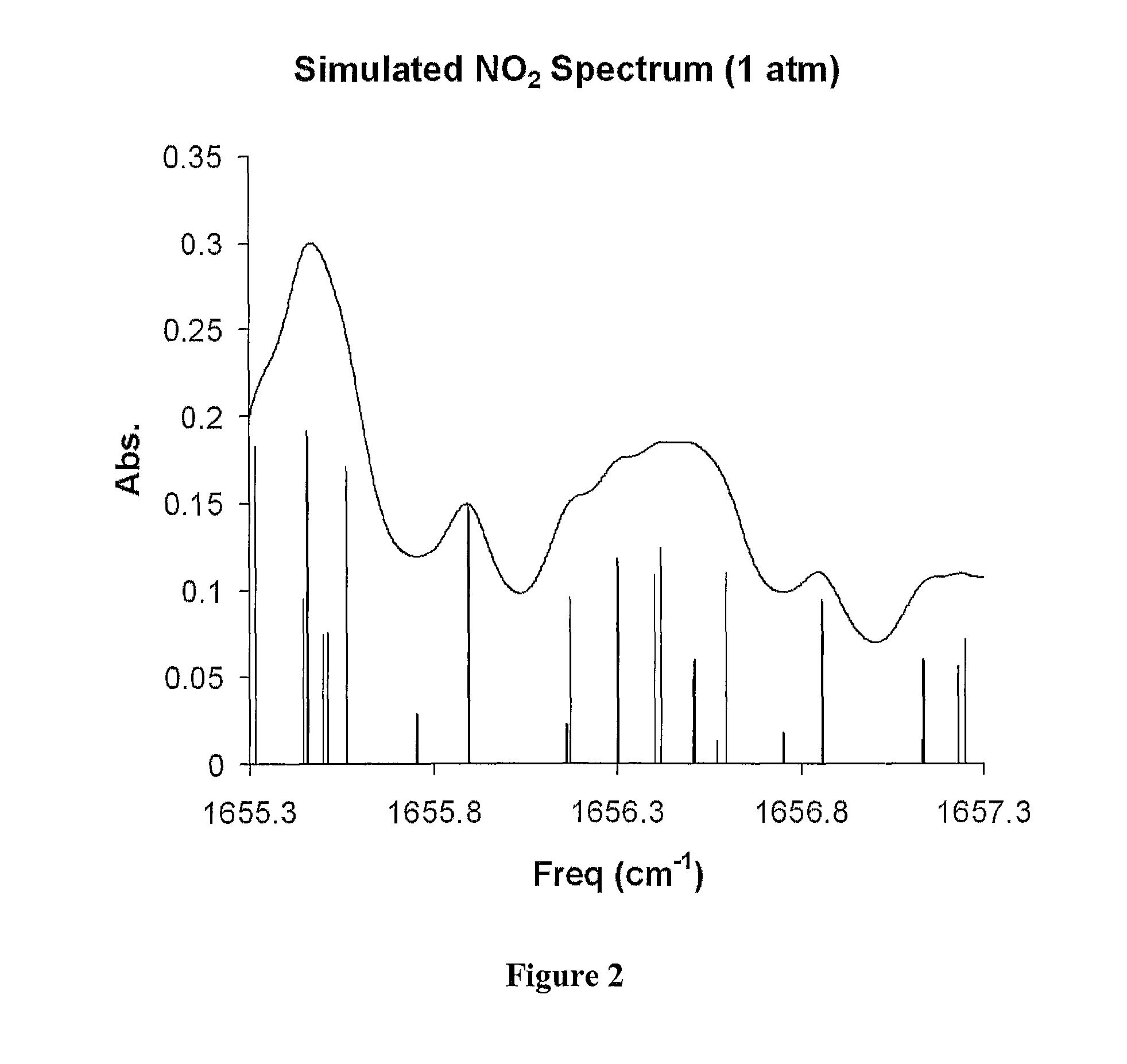Method and apparatus for trace gas detection using off-axis cavity and multiple line integrated spectroscopy
a trace gas and integrated spectroscopy technology, applied in the field of trace gas detection, can solve the problems of major optical feedback, achieve the effect of boosting the magnitude of the recorded signal, enhancing the sensitivity of detection, and reducing the noise of the effect of averaging
- Summary
- Abstract
- Description
- Claims
- Application Information
AI Technical Summary
Benefits of technology
Problems solved by technology
Method used
Image
Examples
Embodiment Construction
[0037]According to the present invention and as shown in FIG. 1, Integrated Cavity Output Spectroscopy of NO2 is carried out using a Continuous Wave Quantum Cascade Laser (QCL). A suitable QCL is available from Daylight Solutions (Model TLS-CW-MHF). The QCL uses an external cavity (comprised of a diffraction grating aligned in a Littrow configuration), to provide a wide range of mode hop-free tuning (1604 cm−1 to 1670 cm−1) and a narrow line width (˜0.001 cm−1), which is well suited for spectroscopic measurements.
[0038]FIG. 1 shows a Quantum Cascade laser 20, the output of which is directed on to a beam splitter 22. One part of the beam is reflected downwardly in the drawing to a reference cell 28. The other part of the beam travels through the beam splitter and enters an acousto-optic modulator (“AOM”) 42 that chops the laser beam into laser beam pulses. The laser pulses enter a cavity ring down (CRD) cell 10, where it makes a sufficient number of round trips by bouncing off high r...
PUM
| Property | Measurement | Unit |
|---|---|---|
| frequency | aaaaa | aaaaa |
| frequency | aaaaa | aaaaa |
| volume | aaaaa | aaaaa |
Abstract
Description
Claims
Application Information
 Login to View More
Login to View More - R&D
- Intellectual Property
- Life Sciences
- Materials
- Tech Scout
- Unparalleled Data Quality
- Higher Quality Content
- 60% Fewer Hallucinations
Browse by: Latest US Patents, China's latest patents, Technical Efficacy Thesaurus, Application Domain, Technology Topic, Popular Technical Reports.
© 2025 PatSnap. All rights reserved.Legal|Privacy policy|Modern Slavery Act Transparency Statement|Sitemap|About US| Contact US: help@patsnap.com



